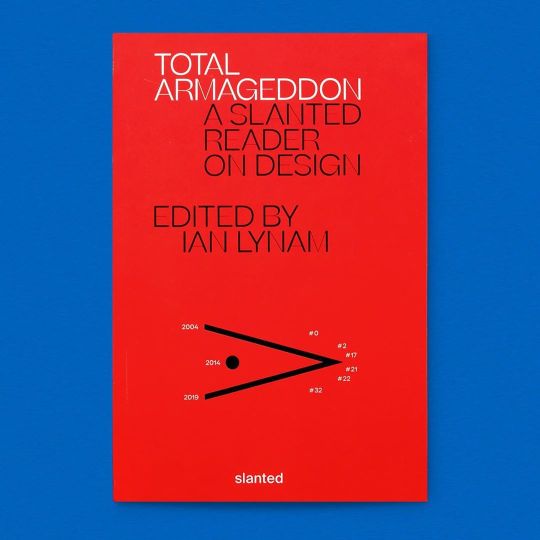#onur yazıcıgil
Text

Arabic Typography. History and Practice, Edited and designed by Titus Nemeth, niggli Verlag, Salenstein, 2022 [Draw Down, New Haven, CT, and Boston, MA]












Introduction: Gerry Leonidas
Preface: Robert Bringhurst
Essays: Emanuela Conidi, Borna Izadpanah, Titus Nemeth, and Onur Yazıcıgil
Plus:
Titus Nemeth, 'Arabic Typography: History and Practice' is out now, «TypoArabic» – Towards historically informed practice in contemporary Arabic typography, University of Reading, October 20, 2022
Titus Nemeth, Taking stock and looking ahead, «TypoArabic» – Towards historically informed practice in contemporary Arabic typography, University of Reading, Reading, June 14, 2021
#graphic design#typography#script#visual writing#calligraphy#journal#book#cover#book cover#titus nemeth#gerry leonidas#robert bringhurst#emanuela conidi#borna izadpanah#onur yazıcıgil#typoarabic#niggli verlag#2020s
21 notes
·
View notes
Text

Amazon.co.jp - Arabic Typography: History and Practice - Titus Nemeth and Robert Bringhurst, Emanuela Conidi, Borna Izadpanah, Gerry Leonidas, Onur Yazıcıgil
4 notes
·
View notes
Text
0 notes
Photo

Total Armageddon: A Slanted Reader on Design Available at www.draw-down.com A book about design. And culture. And complexity, notably how we, as a global civilization, deal with science fiction, taste, social media, the cities we live in, aesthetics, PowerPoint, burkas, Big Tech, full-contact sports, and other thorny topics. A collection of both essays that are brand new, as well as the very best essays from past issues of Slanted Magazine, written by the most vital and vibrant global voices in writing on design and culture today such as Steven Heller, Piotr Rypson, Gerry Leonidas, Yoon Soo Lee, Kiyonori Muroga, and a host of others. With essays by Can Altay, Eran Bacharach, Simon Baker, Emanuel Barbosa, Laure Boer, Gerda Breuer, Dr. Nadine Chahine, Doug Clouse, Olga Drenda, Jori Erdman, Marcus Farr, Kenneth FitzGerald, Charlotte von Fritschen, Amélie Gastaut, Martin Giesen, Jonathan M. Hansen, Steven Heller, Ilka Helmig, Will Hill, Lorena Howard-Sheridan, Natalia Ilyin, Mr. Keedy, Marianna Kellokoski, Matilda Kivelä, Toshiaki Koga, Iwona Kurz, Carolina Laudon, Yoon Soo Lee, Gerry Leonidas, Christine Lhowe, Tim Loffing, Mathieu Lommen, Ian Lynam, Dermot Mac Cormack, Georgios Matthiopoulos, Julia Meer, Silas Munro, Kiyonori Muroga, Randy Nakamura, Alexander Negrelli, Ingo Niermann, Panos Papanagiotou, Natassa Pappa, David Peacock, Louise Rouse, Piotr Rypson, Niki Sioki, Huda Smitshuijzen AbiFarès, Thierry Somers, Sonja Steppan, Agata Szydłowska, Aleksander Tokarz, Alexander Torell, Angela Voulangas, Rene Wawrzkiewicz, Wolfgang Weingart, and Onur F. Yazıcıgil #GraphicDesign #Design #Armageddon #globalcivilization #social #closed #covid19 #globalvoices (at Germany) https://www.instagram.com/p/B9y0oZIHyfu/?igshid=r38sbshlr257
5 notes
·
View notes
Text
About this project
In 2015 I was asked by Rosanna Galvani to build a big virtual museum that would house the work of many different metaverse artists on the OpenSim at Craft World. The outcome was a 405 virtual meters high tower made out of pods and platforms, the pictures of which can be viewed here.
Although my brief was building an architecture, being a graphic designer I added a small branding identity to the project: A logotype with some alternative usages and a signalization system. For these I used a beautiful font called "Duru Sans" that was designed by a good friend of mine, Onur Yazıcıgil. Aside from its beauty and legibility I used "Duru Sans" also because it has a big weight family, ranging from hairline to black.
I always wanted to extend this identity to a full branding package. However, a virtual museum has only a limited range of graphic design products that a branding identity can be applied to. Things work differently in the metaverse. There are no cafes where you look at a menu, you have note cards instead of brochures and flyers, and no letters are sent out that would need stationery design.
So, what I decided to do was to pretend that the virtual museum became a part of a bigger thing - a real life museum that would allow its visitors to access the online architecture and its contents from within the physical architecture that surrounded them. Such a museum would of course need things like brochures and posters and stationery packages and cafe and gift shop items and display material that my logo could be tested on.
How would the logo look on a poster? How would it look on a letterhead? What it would look like printed with gold foil? Could a brochure be designed around it? How would you apply it to a physical banner or a flag? Could you build paper products around it? What about placing it on big walls?
I wish there would be a "real life" metaverse museum where people would reach virtual worlds through VR headsets, joysticks and phone controllers, or projected onto huge walls... But my objective here is not visualizing a wish. I play here as a graphic designer. My curiosity is about my own skills as a graphic designer.
My main reason, in fact my only reason really, for making things is that I wonder what something that lives inside my head will look like when I put it down on paper (or a screen nowadays, of course). And I was really curious to see whether my logo (and its alternatives) would withstand an extension into different products. Would a system created around them actually work?
The result is on this site. I think (or I hope) that the identity holds up. Especially thanks to the font which performs extraordinarily well wherever I have applied it. Thank you Onur, for your generosity in letting me freely use it.
And thank you Rosanna Galvani for entrusting me with the building work for your visionary project of creating a museum for metaverse artists.
0 notes